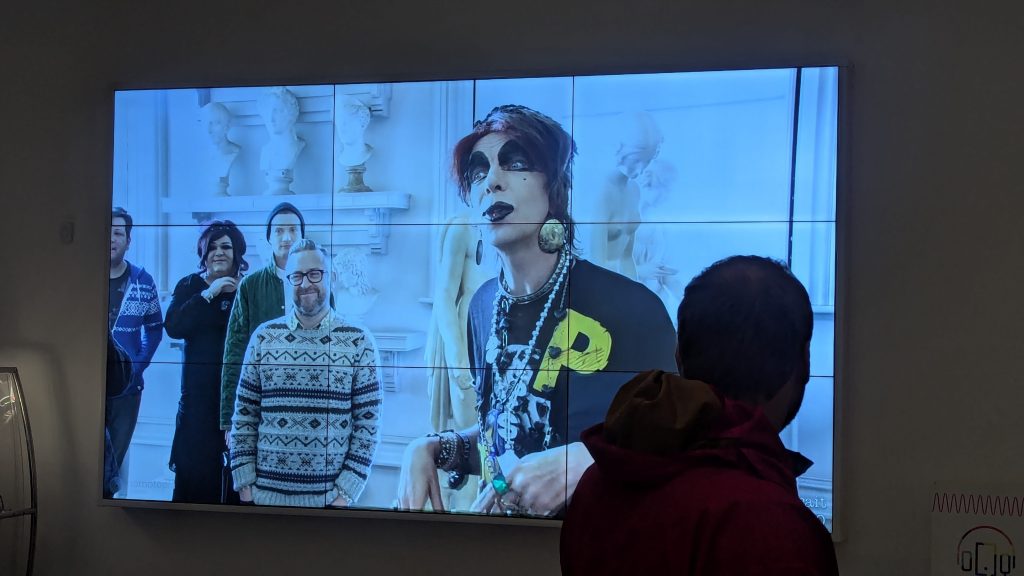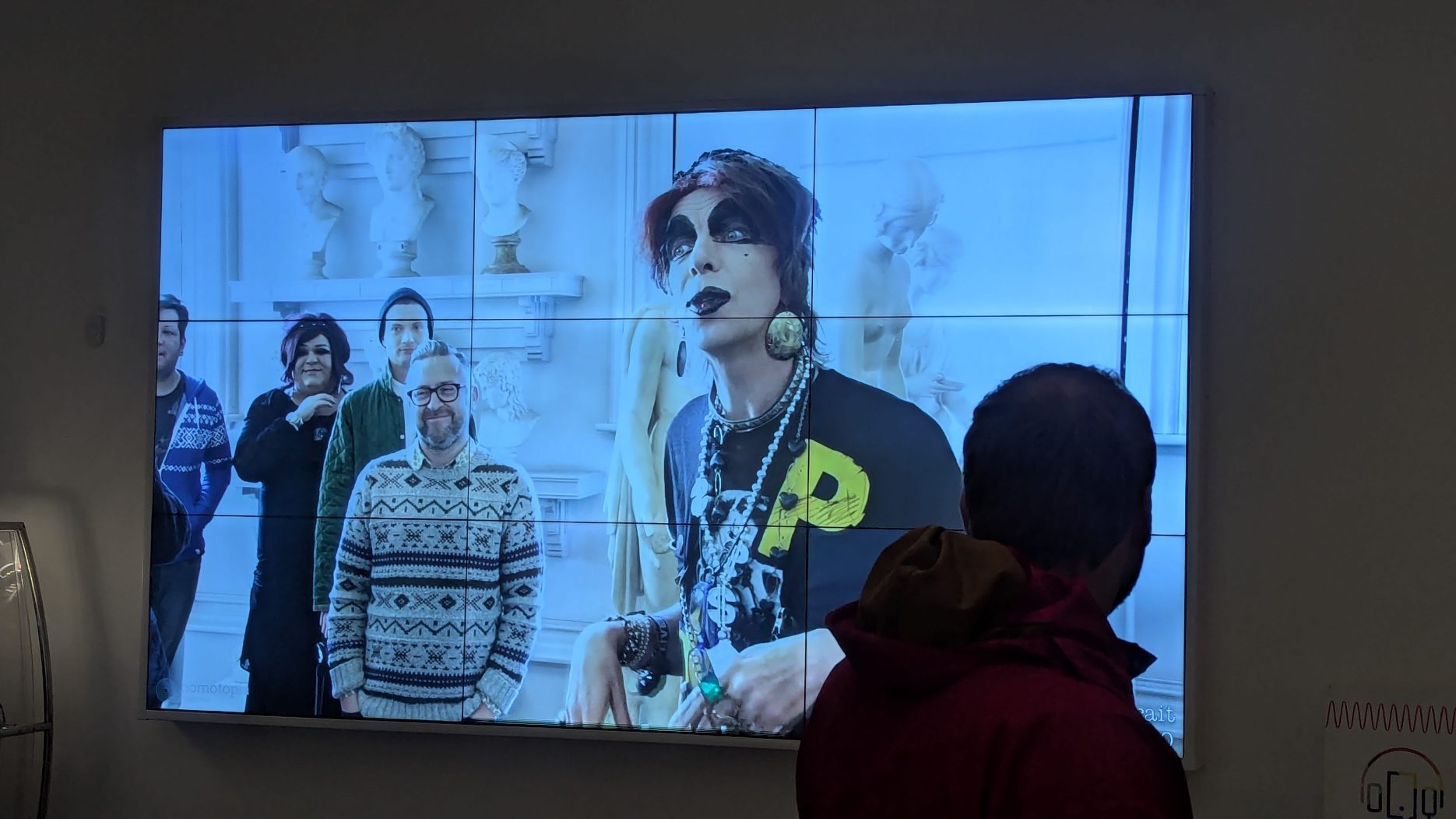
By Joe Goff
Catalogues can make me think of grids and hard lines, of bringing (the excitement of) chaos to (less magical) order – crossing t’s and dotting i’s – drawing scattered knowledge and experiences into a net, and pulling them in line, for the sake of good, proper, research.
Something feels off about trying to neatly categorise and mark the edges of the video archive of Homotopia – a festival with an MO at heart that feels in direct opposition to what I’m trying to do. That willfully and deliberately throws off labels, and rejects words that correspond exactly to that-which-they-are-describing. I don’t just want to barge in. To rodeo these boxes and boxes of beautifully hand-labelled Mini DV tapes, I worry it might cause them to lose their glamour. But sometimes order is also access, things that are organised can then be called on, and shared. An archive means you don’t necessarily need to know-someone-who-knows-someone to get at it.
Once we had the camera plugged in and started skimming through tapes with these incredible names, it felt obvious that this stuff had to be made available, even if that meant blanketly assigning them a slightly less personal catalogue number onto it – they could still keep their original names. Sorting through things means you’re putting them in constant dialogue with one another, and you can see patterns emerge even beyone the boundaries of the festival itself. Venues that have sprung up and disappeared from the programme altogether, whether through gentrification of the city, a lack of interest in queer culture or perhaps for other, less alarming, reasons. You see artists and audiences returning again and again, updating their concerns as climates in the personal and political fluctuate. And the festival’s various names: what does a shift from: ‘A Queer New World’ and ‘From Liverpool With Love’ to ‘Queer Joy is A Protest’ and ‘Uprising’ tell us? It’s so rare to be granted such a macro perspective, especially over a festival I’ve had minimal first hand experience of, mostly due to my age and having not grown up in Liverpool.

On a micro level too there’s just so many incredible images, yes, there’s raucous stage shows with breathtaking costumes and dance, as well as careful, thoughtful group conversations, but there’s also so much that even audiences at the time never got to see. Looking behind the scenes has always interested me, like DVD extras and director’s commentaries, and getting to see more candid moments, as people rehearse, get dolled up, or flex their offhand is so exciting. I think for those working in, or just wanting an insight into, the world of queer culturalcultral life will get so much out of exploring the footage when it’s made available.
This has all taken on a weird double meaning too, 2025 has seen exceptional attacks on the status of LGB+ and especially T people in this country, in press, government, law and day-to-day life. The sheer inertia of the hostility has had, almost, the effect of retroactively erasing trans people from history altogether – part of the transphobic mythmaking process hinges on the idea that transgender and queer people have sprung up out of nowhere, and exist totally separately from communities. Rediscovering these tapes tells a different story, of a firmly rooted queerness in Liverpool, of working class, DIY culture with radically open arms. There’s a wildness and high volume to much of the festival’s programme which feels so cathartic to experience back, but all throughout there’s also a carefully woven-in version of queerness that feels anti-assimilationist, charged and still sharply able to diagnose issues that we’re still all getting our heads around today. There’s quieter discussions: about what queer family can and does look like; how formats of many LGBT+ events and even entrenched beauty standards still not shaken off, can impact disabled queer people; or even deep historical dives into the lives of LGBT+ people past, how did they make community when times were also hostile, how did they look, act and speak?
Part of the overwhelm that comes with tackling the Right in 2025 comes from a hopeless feeling that we’re starting from scratch, I think that’s by design. Whilst the Right are, in a large part, defined by their wilful rejection of the past (bar a cartoonish, mythologised one not based in reality), it’s even more the task of progressive people to pick up where those before us have left off, which is why archives can be used in such a decisive way. So much of the knowledge created at Homotopia, and captured so painstakingly by Tim Brunsden and the whole team,
Joe has created a ‘Homotopia Archive Supercut’ of some incredible material from the archive which is available to view at the Museum of Liverpool through November.

